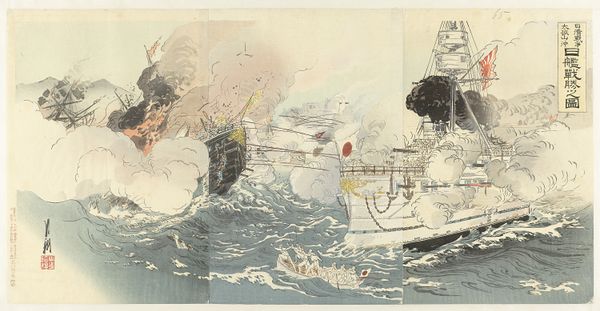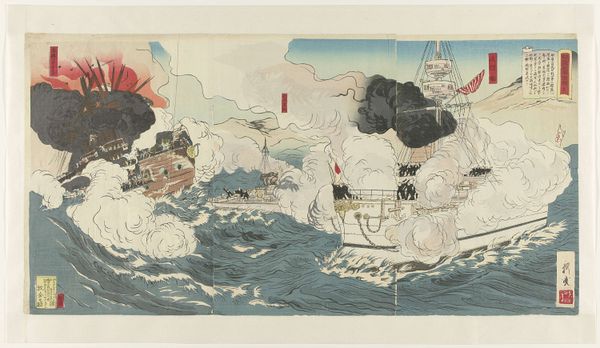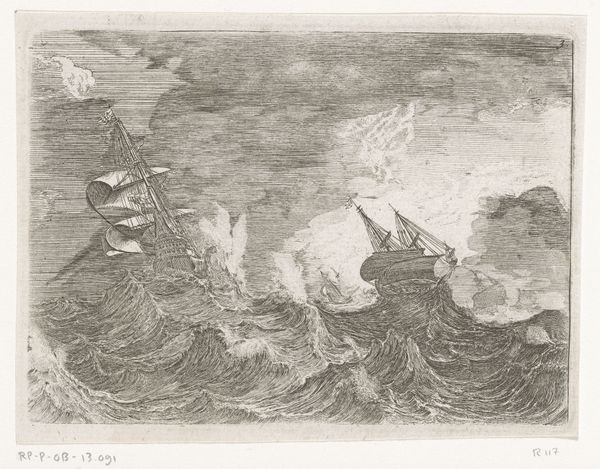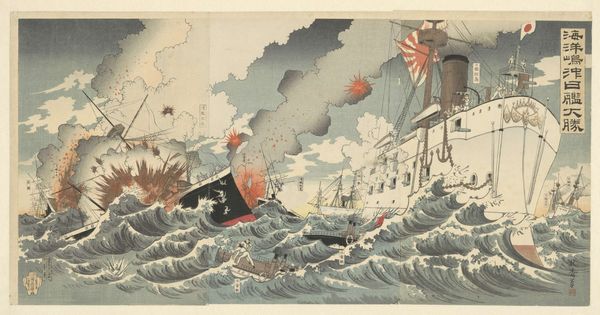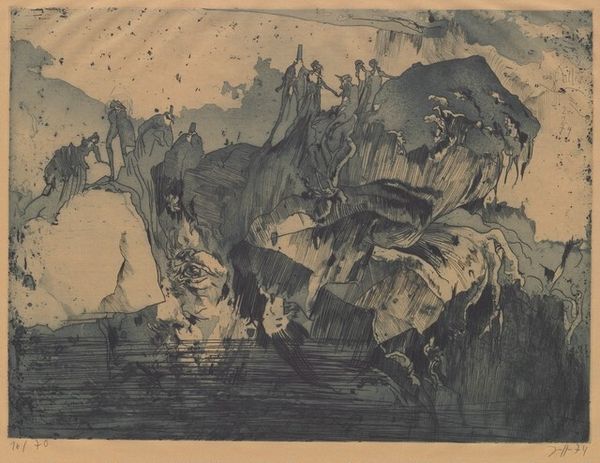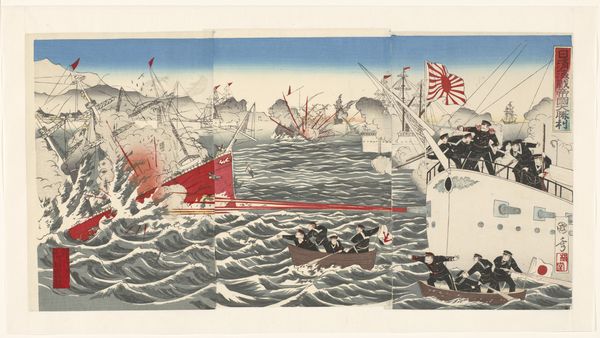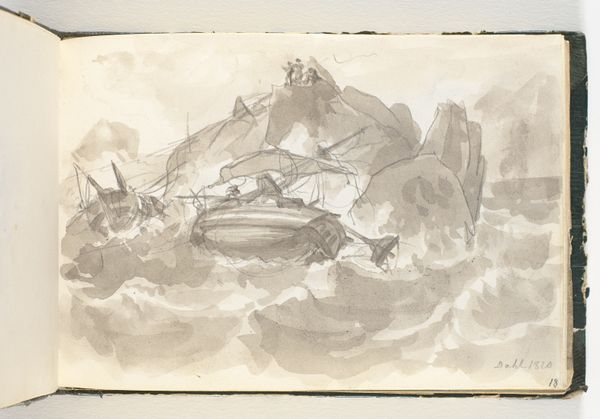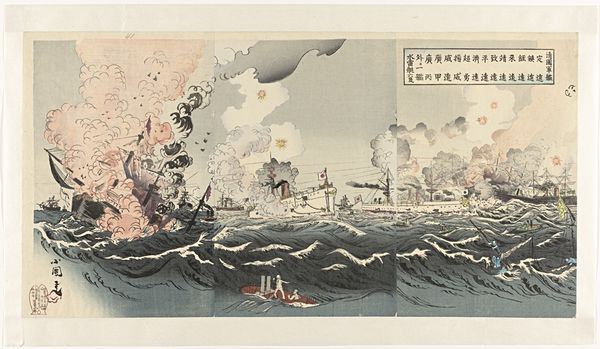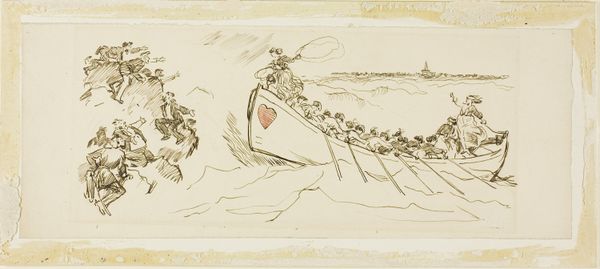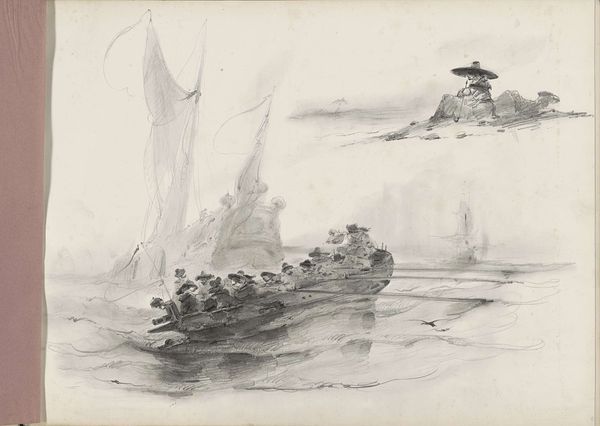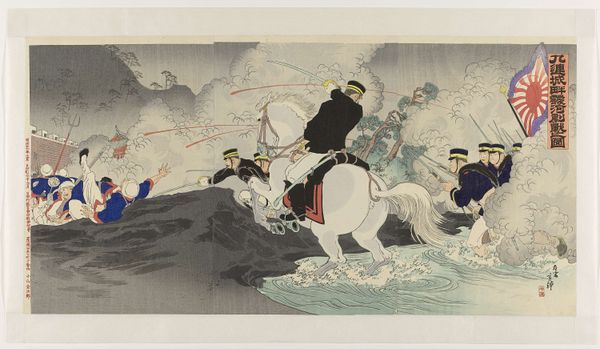
Afbeelding van de Chinees-Japanse Oorlog en de grote overwinning van de Japanse marine nabij Dagushan 1894
0:00
0:00
Dimensions: height 354 mm, width 717 mm
Copyright: Rijks Museum: Open Domain
Curator: Ogata Gekko's 1894 mixed-media print, currently residing at the Rijksmuseum, is titled "Afbeelding van de Chinees-Japanse Oorlog en de grote overwinning van de Japanse marine nabij Dagushan". Editor: Well, immediately I’m struck by the sheer drama of the scene, a chaotic clash rendered with remarkable energy. The billowing smoke and tumultuous waves, particularly, suggest incredible movement. Curator: The subject matter and the Ukiyo-e style are both essential, yes. But think about the intense labor involved in crafting this woodblock print and its subsequent mass production. These images were distributed widely, shaping public opinion and glorifying war. Editor: Of course, and the visual vocabulary is crucial to understanding that shaping. Look at the dynamic composition, the placement of ships, the contrasting colors, it directs our eyes precisely where Gekko intends. Semiotically, the flags signify not just nations, but dominance and triumph. Curator: Consider how this print uses watercolours and ink alongside traditional woodblock techniques. The incorporation of Western styles catered to evolving consumer tastes and extended the market reach of these prints. It shows a culture adapting its production to dominate in consumption. Editor: Perhaps, but the formal elements speak to universal emotions. Note the use of perspective to convey depth. How the white of the smoke contrasts sharply with the darker blues and greys to heighten the drama. What message about death and sacrifice is subtly woven throughout the structure itself? Curator: Absolutely. It also shows the commodification of war. Prints like this, while depicting intense battles, became objects of consumption. The mass production turned war into a product. It wasn't just about glorifying victory, but also participating in the war effort via market exchanges. Editor: A potent mix indeed: raw visual energy, meticulously controlled for specific impact. Together, this is much more than propaganda; it is the artist distilling conflict into a carefully orchestrated aesthetic experience meant to make a statement and be forever visually etched into your mind. Curator: A stark reminder of the complexities inherent in even seemingly straightforward historical depictions and production processes. Editor: Leaving us with much to ponder, especially the tension between art, war, and representation.
Comments
No comments
Be the first to comment and join the conversation on the ultimate creative platform.
